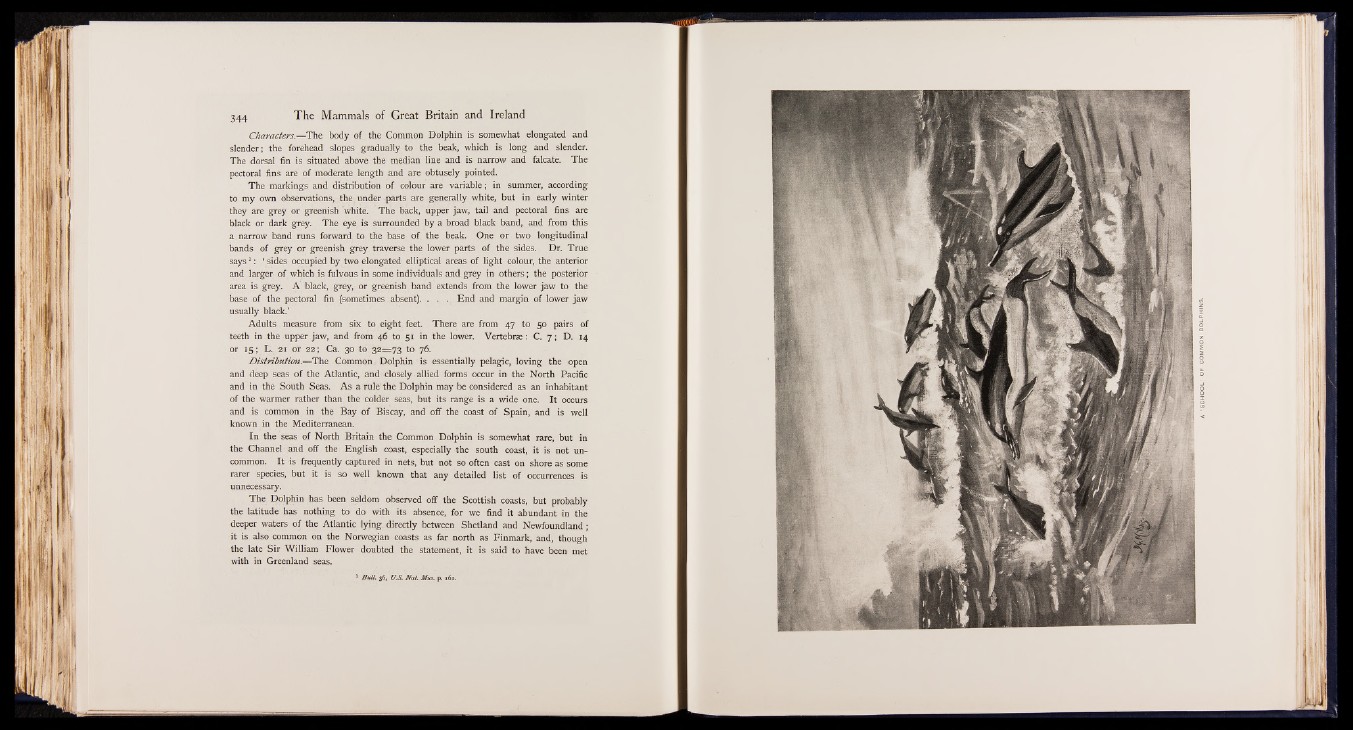
Characters.— The body of the Common Dolphin is somewhat elongated and
slender; the forehead slopes gradually to the beak, which is long and slender.
The dorsal fin is situated above the median line and is narrow and falcate. The
pectoral fins are of moderate length and are obtusely pointed.
The markings and distribution of colour are variable; in summer, according
to my own observations, the under parts are generally white, but in early winter
they are grey or greenish white. The back, upper jaw, tail and pectoral fins are
black or dark grey. The eye is surrounded by a broad black band, and from this
a narrow band runs forward to the base of the beak. One or two longitudinal
bands of grey or greenish grey traverse the lower parts of the sides. Dr. True
says1: ‘ sides occupied by two elongated elliptical areas of light colour, the anterior
and larger of which is fulvous in some individuals and grey in others; the posterior
area is grey. A black, grey, or greenish band extends from the lower jaw to the
base of the pectoral fin (sometimes absent). . . . End and margin of lower jaw
usually black.’
Adults measure from six to eight feet. There are from 47 to 50 pairs of
teeth in the upper jaw, and from 46 to 51 in the lower. Vertebrae: C. 7 ; D. 14
or 15; L. 21 or 22; Ca. 30 to 32=73 to 76.
Distribution.— The Common Dolphin is essentially pelagic, loving the open
and deep seas of the Atlantic, and closely allied forms occur in the North Pacific
and in the South Seas. As a rule' the Dolphin may be considered as an inhabitant
of the warmer rather than the colder seas, but its range is a wide one. It occurs
and is common in the Bay of Biscay, and off the coast of Spain, and is well
known in the Mediterranean.
In the seas of North Britain the Common Dolphin is somewhat rare, but in
the Channel and off the English coast, especially the south coast, it is not uncommon.
It is frequently captured in nets, but not so often cast on shore as some
rarer species, but it is so well known that any detailed list of occurrences is
unnecessary.
The Dolphin has been seldom observed off the Scottish coasts, but probably
the latitude has nothing to do with its absence, for we find it abundant in the
deeper waters of the Atlantic lying directly between Shetland and Newfoundland;
it is also common on the Norwegian coasts as far north as Finmark, and, though
the late Sir William Flower doubted the statement, it is said to have been met
with in Greenland seas.
B u ll. 36, U S. Nat. Mus. p. i6x.